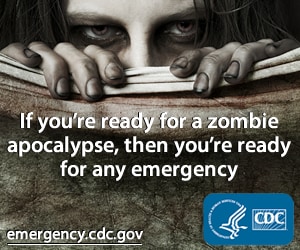Are you ready? What are you ready for? For starters September is National Preparedness Month and this year is a little special. Not only is it the 10th anniversary of the largest terrorist attack on US soil, numerically it will 9-11 all month long. Let's think about that. First we need to take a moment of silence and remember the folks, all the folks that were involved at the ACTIVE sites, the towers, the pentagon, and on flight 93. We also need to remember all of us, Americans every shape size color and religion we're united again by 3 colors ~ red white and blue.
September 2011 will be the eighth annual National Preparedness Month, sponsored by the US Department of Homeland Security. One goal of Homeland Security is to educate the public about how to prepare for emergencies, including natural disasters, mass casualties, biological and chemical threats, radiation emergencies, and terrorist attacks.
During September, emergency preparedness forums, blogs, and websites will focus on:
Home and family preparedness, including pets, older Americans, and individuals with disabilities and special needs (Ready America)
Back-to-school (Ready Kids)
Business preparedness (Ready Business)
In collaboration with the American Red Cross, CDC's Web site, Emergency Preparedness Ready.gov identifies and answers common questions about preparing for unexpected events, including:
•Developing a family disaster plan
•Gathering emergency supplies
•Learning how to shelter in place
•Understanding quarantine and isolation
•Learning how to maintain a healthy state of mind
Additional information and resources are available from Emergency Preparedness and Response under topics such as hurricane preparedness, extreme heat, and bioterrorism. CDC continually updates information on recent outbreaks and incidents and lists emergency resources for the general public as well as for clinicians and public health professionals.
During September, focus on being ready – at home, at work, and in your neighborhood – and prepare for a natural disaster or other emergencies In the last 2 weeks we personally have dealt with an earthquake, a potential hurricane, illness and more. Just be prepared, it really could do your family well..
Dwelling on the past doesn't do any good, but remembering does wonders. Our thoughts and prayers are with everyone touched by 9/11 and from where I sit, that was all of us.
BTW: Happy Birthday D. We love you.











